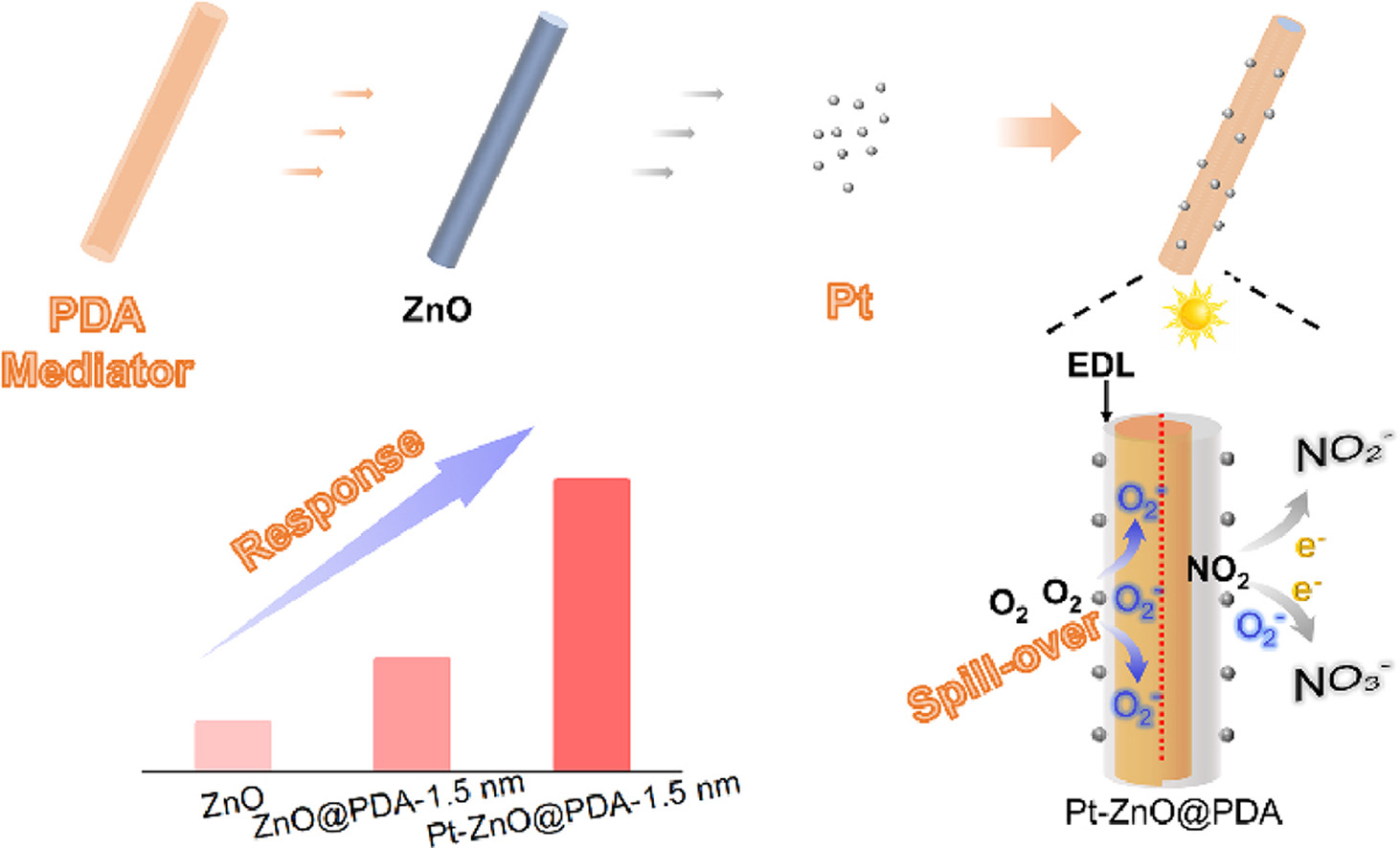
Cover Picture
UV-resistant salicylic acid as interface modifier for efficient and stable perovskite solar cells
Guo-Bin Xiao, Zihan Fang, Shengrong Yang*, Jing Cao*, Yu Tang* Submit a Manuscript
UV-resistant salicylic acid as interface modifier for efficient and stable perovskite solar cells
Guo-Bin Xiao, Zihan Fang, Shengrong Yang*, Jing Cao*, Yu Tang* Submit a Manuscript
Enhanced room temperature gas sensing performance of ZnO with atomic-level Pt catalysts facilitated by the polydopamine mediator
Qian Liu, Yingyi Wen, Jian-Ze Xiao, Shao-Zhen Luo, Guan-E Wang, Peng-Yi Tang, Xiao-Liang Ye*, Gang Xu*
Chin. J. Struct. Chem., 2023, 42: 100069. DOI: 10.1016/j.cjsc.2023.100069
June 15, 2023
Atomic-level metal catalysts; ZnO nanorods; Polydopamine; Gas sensing; NO2
ABSTRACT
The poor sensitivity of metal-oxide (MO) sensing material at room temperature can be enhanced by the modification of noble metal catalysts. However, the large size and uncontrollable morphology of metal nanoparticles (NPs) compromise the catalytic activity and selectivity. Downsizing metal NPs to the atomic level is a promising solution because it offers high activity and selectivity. Nevertheless, a facile and universal approach for stable loading atomic-level metal on MO-based sensing materials is still challenging. Herein, we present a strategy to construct synergetic coordination interface for uniform loading of atomic-level metal catalysts on MO-based gas-sensing materials using a difunctional mediator layer. In this work, atomically dispersed Pt catalysts are coordinately anchored on ZnO nanorods (NRs) using polydopamine (PDA) as a mediator. As a result, compared with pristine ZnO NRs, a six-fold enhanced response of 18,489% is achieved toward 100 ppm NO2 on 0.20 wt%Pt–ZnO@PDA-1.5 nm, and the selectivity is also promoted. Such sensitivity is higher than that of most reported noble metal-modified MO NO2-sensing materials. This work provides a simple and general strategy for building highly sensitive and selective gas-sensing materials using atomic-level noble metal catalyst.







